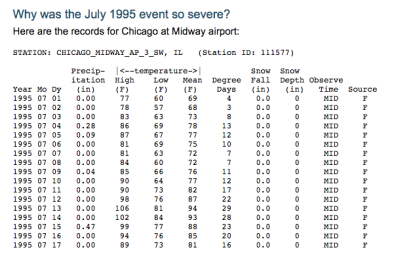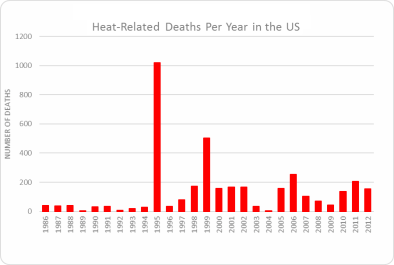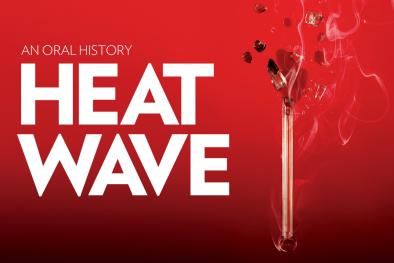Projected future temperature and precipitation extremes in Chicago
States that heat waves and cold waves in Chicago cause more than 100 fatalities per year, while extremely heavy rainfall can trigger disease outbreaks via contaminant discharge of stormwater and sewage overflows
Analyzes statistically downscaled climate model projections of extreme heat, cold, and precipitation in Chicago, based on higher (SRES A1FI) and lower (SRES B1) greenhouse gas emissions scenarios
Finds the frequency, duration, and intensity of heat waves in Chicago are likely to increase substantially, and the heat-wave “season” extended (time during the year when extreme heat occurs)
Simulations indicate that the frequency of hot days with maximum temperatures greater than 32°C with increase from 15 days/year to 36 (B1) to 72 (A1F1) by 2100
Projections show a proportional and much larger increase (a factor of 4 to 15) in very hot days with temperatures greater than 38°C (Tmax > 38 °C)
Projections show the coldest night of the year warming by 4–8 °C
Simulations indicate the frequency of cold days with minimum daily temperatures below -18°C will decrease by 50 to nearly 90 percent by 2100 compared to the late 20th century—or 5 (B1) to 8 (A1F1) days
As for precipitation simulations, extreme precipitation events generally increase, especially during winter and spring, consistent with the seasonal changes in total precipitation
- Finds the projected seasonal changes in atmospheric circulation generally resemble the synoptic weather patterns associated with current extreme events, particularly during spring and summer, suggesting that some of the modeled response of extremes may be driven by mean dynamical changes
Related Content





